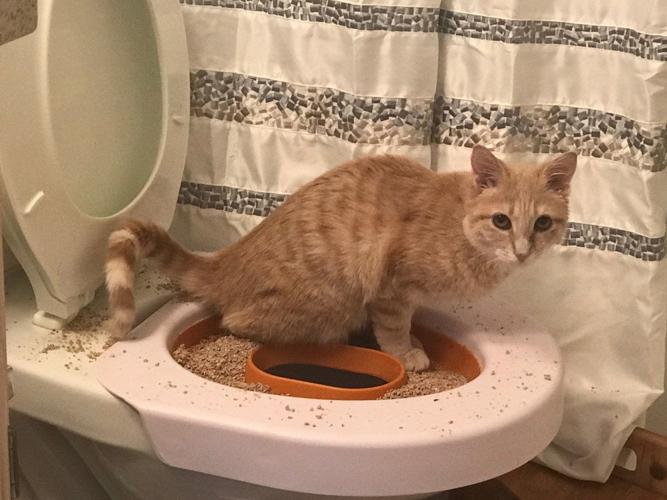Reasons You Should Never Flush Cat Poop Down Your Toilet - Crucial Information
Reasons You Should Never Flush Cat Poop Down Your Toilet - Crucial Information
Blog Article
We have discovered this article involving Don’t flush cat feces down the toilet listed below on the net and accepted it made good sense to discuss it with you here.

Intro
As pet cat proprietors, it's vital to be mindful of just how we get rid of our feline close friends' waste. While it may appear practical to flush feline poop down the toilet, this method can have harmful consequences for both the atmosphere and human health and wellness.
Alternatives to Flushing
Thankfully, there are safer and more liable ways to dispose of pet cat poop. Take into consideration the complying with choices:
1. Scoop and Dispose in Trash
The most usual technique of disposing of pet cat poop is to scoop it right into a biodegradable bag and toss it in the garbage. Make sure to make use of a specialized litter scoop and throw away the waste quickly.
2. Use Biodegradable Litter
Go with eco-friendly cat clutter made from materials such as corn or wheat. These clutters are eco-friendly and can be securely taken care of in the trash.
3. Bury in the Yard
If you have a lawn, think about hiding pet cat waste in a marked area far from vegetable gardens and water resources. Be sure to dig deep enough to avoid contamination of groundwater.
4. Set Up a Pet Waste Disposal System
Purchase a family pet garbage disposal system especially made for pet cat waste. These systems make use of enzymes to break down the waste, lowering smell and ecological effect.
Health Risks
In addition to ecological problems, purging cat waste can also posture health and wellness dangers to humans. Pet cat feces may contain Toxoplasma gondii, a bloodsucker that can cause toxoplasmosis-- a possibly serious illness, specifically for pregnant females and individuals with damaged immune systems.
Ecological Impact
Flushing pet cat poop introduces unsafe pathogens and bloodsuckers right into the water system, posing a considerable threat to marine environments. These pollutants can adversely impact aquatic life and concession water quality.
Conclusion
Liable family pet ownership extends beyond providing food and shelter-- it additionally involves correct waste administration. By avoiding purging pet cat poop down the commode and choosing alternate disposal methods, we can reduce our environmental impact and shield human wellness.
Why Can’t I Flush Cat Poop?
It Spreads a Parasite
Cats are frequently infected with a parasite called toxoplasma gondii. The parasite causes an infection called toxoplasmosis. It is usually harmless to cats. The parasite only uses cat poop as a host for its eggs. Otherwise, the cat’s immune system usually keeps the infection at low enough levels to maintain its own health. But it does not stop the develop of eggs. These eggs are tiny and surprisingly tough. They may survive for a year before they begin to grow. But that’s the problem.
Our wastewater system is not designed to deal with toxoplasmosis eggs. Instead, most eggs will flush from your toilet into sewers and wastewater management plants. After the sewage is treated for many other harmful things in it, it is typically released into local rivers, lakes, or oceans. Here, the toxoplasmosis eggs can find new hosts, including starfish, crabs, otters, and many other wildlife. For many, this is a significant risk to their health. Toxoplasmosis can also end up infecting water sources that are important for agriculture, which means our deer, pigs, and sheep can get infected too.
Is There Risk to Humans?
There can be a risk to human life from flushing cat poop down the toilet. If you do so, the parasites from your cat’s poop can end up in shellfish, game animals, or livestock. If this meat is then served raw or undercooked, the people who eat it can get sick.
In fact, according to the CDC, 40 million people in the United States are infected with toxoplasma gondii. They get it from exposure to infected seafood, or from some kind of cat poop contamination, like drinking from a stream that is contaminated or touching anything that has come into contact with cat poop. That includes just cleaning a cat litter box.
Most people who get infected with these parasites will not develop any symptoms. However, for pregnant women or for those with compromised immune systems, the parasite can cause severe health problems.
How to Handle Cat Poop
The best way to handle cat poop is actually to clean the box more often. The eggs that the parasite sheds will not become active until one to five days after the cat poops. That means that if you clean daily, you’re much less likely to come into direct contact with infectious eggs.
That said, always dispose of cat poop in the garbage and not down the toilet. Wash your hands before and after you clean the litter box, and bring the bag of poop right outside to your garbage bins.
https://trenchlesssolutionsusa.com/why-cant-i-flush-cat-poop/

I recently found that blog entry about Can You Flush Cat Poo or Litter Down the Toilet? when surfing the web. I beg you set aside a second to promote this blog entry if you enjoyed reading it. Thanks a lot for your time invested reading it.
Schedule Report this page